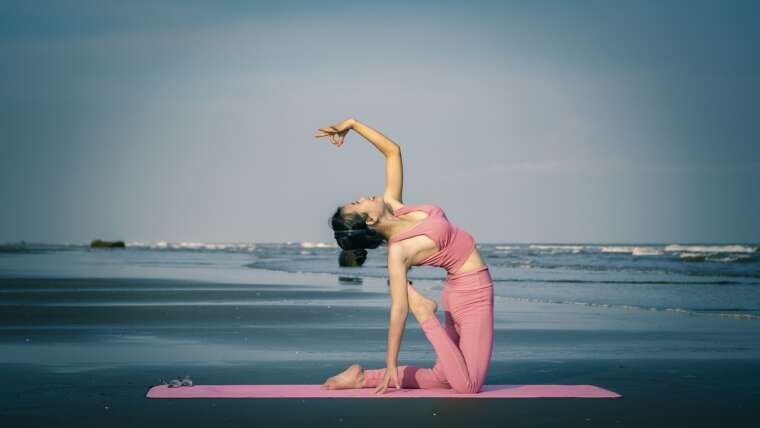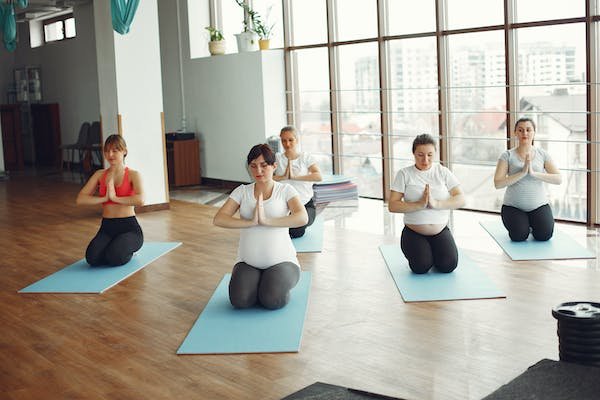Yoga, often associated with flexibility and relaxation, is a powerful practice that goes beyond calming the mind and improving flexibility—it is a formidable tool for building strength. Contrary to the common misconception that strength is solely gained through weightlifting or high-intensity workouts, yoga offers a unique and holistic approach to building physical and mental resilience. In this article, we’ll delve into how you can harness the strength-building potential of your yoga practice, exploring the physical, mental, and emotional dimensions of strength cultivation.
Strength is not just in the body; it’s in the way you breathe through challenges and stand tall amidst the storms. Yoga teaches us that true strength is a union of mind, body, and spirit.
The Physical Aspect: Asanas for Power and Endurance
Yoga asanas, or postures, form the cornerstone of physical strength development in yoga. While some yoga styles may prioritize flexibility, many incorporate poses that engage and challenge various muscle groups, fostering strength and endurance.
- Powerful Standing Poses:
- Poses like Warrior I, Warrior II, and Triangle Pose engage the legs, glutes, and core, promoting lower body strength and stability. These poses build muscular endurance and lay the foundation for a strong physical practice.
- Arm-Balancing Poses:
- Incorporating arm balances like Crow Pose and Side Plank challenges the upper body, particularly the arms, shoulders, and core. These poses not only build strength but also enhance balance and coordination.
- Core Strengthening:
- Many yoga poses inherently engage the core muscles, but specific exercises like Boat Pose, Plank, and Navasana (Boat Pose) can be particularly effective in targeting and strengthening the core, supporting a stable spine and better posture.
- Inversions for Upper Body Strength:
- Inversions like Handstand and Headstand require significant upper body strength. While these poses might seem advanced, there are variations and preparatory poses that can gradually build the strength necessary to attempt full inversions.
- Balancing Poses:
- Balancing poses like Tree Pose and Eagle Pose not only improve balance but also engage various muscle groups, enhancing overall strength and stability.
By incorporating a diverse range of asanas into your practice, you create a comprehensive strength-building routine that targets different muscle groups and fosters overall physical resilience.
As you breathe through each asana, remember: Strength is not just about muscle power; it’s about the power of resilience, patience, and self-love that you cultivate on your yoga journey.
The Mental Aspect: Cultivating Strength through Mindfulness
Strength, in the context of yoga, extends beyond the physical realm to encompass mental fortitude. The practice of mindfulness, a key component of yoga, plays a pivotal role in building mental strength.
- Focus and Concentration:
- Holding yoga poses requires concentration and focus. As you navigate the challenges of balancing, stretching, and holding postures, you develop mental resilience and the ability to stay present in the moment.
- Breath Control (Pranayama):
- Pranayama, or breath control, is an integral part of yoga. By mastering breath awareness and regulation, you cultivate mental discipline. The ability to maintain steady, controlled breathing during challenging poses translates to resilience in the face of life’s stressors.
- Mindful Movement:
- The flow of movement from one pose to another in styles like Vinyasa or Ashtanga requires a mindful connection between breath and movement. This moving meditation fosters mental strength, allowing you to navigate transitions both on and off the mat with grace and resilience.
- Meditation and Visualization:
- Incorporating meditation and visualization techniques into your yoga practice enhances mental strength. Techniques such as guided imagery and positive affirmations help build a resilient and positive mindset.
By intertwining mindfulness practices with your physical yoga routine, you forge a powerful union that not only strengthens the body but also nurtures mental fortitude.
The Emotional Aspect: Yoga for Inner Resilience
Emotional strength is an often-overlooked but crucial dimension of overall well-being. Yoga, with its emphasis on self-awareness and connection to emotions, provides a platform for cultivating emotional resilience.
- Emotional Release:
- Yoga offers a safe space for emotional release. Certain poses, such as heart-opening poses like Camel Pose or Bridge Pose, can facilitate the release of stored emotions, promoting emotional healing and resilience.
- Stress Reduction:
- The mindful and meditative aspects of yoga significantly contribute to stress reduction. By managing stress, you enhance your emotional well-being, creating a foundation of inner strength to face life’s challenges.
- Yoga Nidra for Deep Relaxation:
- Yoga Nidra, also known as yogic sleep, is a guided relaxation practice that promotes deep emotional and physical relaxation. Regular practice can alleviate anxiety, promote emotional balance, and enhance overall resilience.
- Cultivating Self-Compassion:
- The non-judgmental and compassionate philosophy of yoga encourages self-love and acceptance. This self-compassion is a source of emotional strength, enabling you to navigate difficulties with grace and kindness toward yourself.
By embracing the emotional aspects of yoga, you not only build physical and mental strength but also foster a profound sense of inner resilience that positively impacts your overall well-being.
Integrating Strength-Building Practices into Your Yoga Routine:
Now that we’ve explored the multifaceted dimensions of strength in yoga, let’s discuss how to integrate these practices into your routine:
- Diversify Your Asana Practice:
- Include a variety of yoga poses in your routine, targeting different muscle groups and aspects of strength. Aim for a balanced practice that includes standing poses, balances, inversions, and core work.
- Mindful Movement:
- Emphasize mindful movement by coordinating breath with each pose. This not only enhances the physical benefits but also strengthens the mind-body connection.
- Incorporate Meditation:
- Dedicate time to meditation, focusing on cultivating mental resilience and positive affirmations. Even a few minutes of daily meditation can have profound effects on your mental and emotional well-being.
- Explore Emotional Release:
- Allow yourself to explore poses that facilitate emotional release. Be gentle with yourself and approach these poses with a mindset of self-compassion.
- Create a Consistent Routine:
- Consistency is key. Whether you practice yoga daily or a few times a week, maintaining a consistent routine will yield the most significant benefits over time.
Conclusion: A Holistic Journey to Strength
Yoga is not about power; it’s about empowerment. It’s the journey of discovering the strength within, unfolding like a lotus in the waters of self-awareness.
In the tapestry of your yoga practice, building strength is a holistic journey that weaves together physical, mental, and emotional elements. By embracing a diverse range of yoga poses, cultivating mindfulness, and nurturing emotional well-being, you create a comprehensive approach to strength that goes beyond the conventional definition. The beauty of yoga lies not only in the physical prowess it fosters but in the transformative strength that emerges as you unite mind, body, and spirit on the mat. As you embark on this journey, remember that strength is not a destination but a continuous evolution, and yoga is your steadfast companion in this ongoing exploration of resilience and empowerment.




1 Comment
truck scale accessories in Iraq
Rely on BWER Company for superior weighbridge solutions in Iraq, offering advanced designs, unmatched precision, and tailored services for diverse industrial applications.